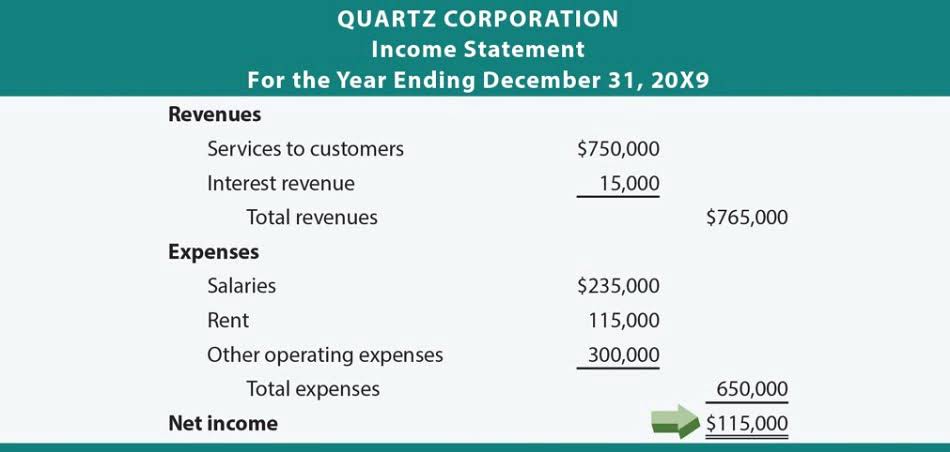
You’ll need to do a journal entry at the beginning of the new year to move the reserves about the various funds. Quickbooks whilst recognising classes is not trying to keep a separate balance sheet for each. Understanding how to handle these funds can significantly impact a nonprofit’s operations and reporting accuracy. Consider the reclassification as an “Income Statement” or P&L entry in the regular business world, where debit means expense and credit means revenue.
accounting made sense

This recognition is crucial as it triggers the reclassification of these funds from temporarily restricted to unrestricted net assets. For instance, if a donor’s contribution was intended for a project that has now been completed, the funds can be released and reallocated accordingly. Temporarily restricted net assets are funds that donors have earmarked for specific purposes or projects, with the expectation that the restrictions will be lifted once certain conditions are met. These conditions could include the passage of time, the completion of a project, or the achievement of a particular milestone. For example, a donor might contribute to a scholarship fund with the stipulation that the money be used within a certain academic year. Once the conditions are satisfied, the funds are “released” and can be reclassified as unrestricted net assets.
Example of a Release from Restriction

Return to the Internal Reports Introduction page for links to greater detail on how to read various reports as well as recommended formatting. Are you curious about what Law Firm Accounts Receivable Management these accounts mean on the Statement of Activities? You’ll want to modify your report by Sorting out and using the Filter to customize it by class.
Technology in Nonprofit Accounting

But obviously in our software in aplos, that allows us using the functionality using the tags to break that out. But it can be a little bit more difficult to visualize what’s going on. By adhering to accounting standards that differentiate between these categories, nonprofits demonstrate a commitment to financial honesty and provide a clear view of their financial health and stewardship of contributed funds. Nonprofit organizations leverage specialized technology to handle the intricacies of fund accounting, ensuring compliance and facilitating reporting. Fund Accounting is a central aspect of nonprofit accounting, where resources are categorized into funds based on restrictions imposed by donors or the board.
- Fund Accounting is a central aspect of nonprofit accounting, where resources are categorized into funds based on restrictions imposed by donors or the board.
- However, if the organization has accepted a gift restricted by the donor, it has agreed to honor the restrictions.
- So let’s start to build from what we’ve what we’ve done over here.
- A restricted fund budget should align with donor stipulations, ensuring that expenses directly support the intended programs or projects.
Handling Unrestricted Funds
- This type of asset provides a stable, ongoing source of funding, contributing to the organization’s long-term sustainability.
- So we see another line item here that has some net assets released unrestricted.
- And then if we go to the income statement, and refresh the income statement with a little refresher button up top, then we should see another line item.
- In other words, I’m going to use this same account here and here.
- Using this workaround, you can use QuickBooks to its best advantage and still be able show net assets balances that are appropriate for your organization.
Once the restrictions are fulfilled, the organization can release those funds from the temporarily restricted net assets and move them to the unrestricted net assets, making them available for use in the organization’s operations. This process is often tracked through the use of accounting software and is an important part of managing the financial health of a nonprofit organization. This presentation we will record a transaction related to net assets being released from restrictions. Let’s head on over to our Excel worksheet to see what our objective will be. As nonprofits, we are required to show our net assets “with donor restrictions” (restricted) separately from those “without donor restrictions” (unrestricted). These further distinctions are not required by GAAP (generally accepted accounting principles), but they provide more clarity for management and internal understanding of net assets composition and liquidity.
- And I think this happened what When did this happen like the end of the year, we’re putting this in as of let’s put it in that as of the end of the year.
- If you use Class Tracking for Restricted and Unrestricted, that helps, for the Income statement, as well.
- So we’re gonna have to account for that in our journal entry, when we make this adjustment to the transfer, the transfer needs to happen, not only on the income statement side, but on the balance sheet side.
- Donors can see that their contributions are being used for the intended purposes, and the organization ensures that funds are handled responsibly and in compliance with donor wishes.
- Audits serve as a tool for accountability in nonprofit organizations, providing assurance that funds are managed according to legal and organizational stipulations.
- Let’s head on over to our Excel worksheet to see what our objective will be.
- These entries are not merely administrative tasks; they play a significant role in the financial statements of the organization.
Reach out to your account for proper recording of the accounts. You additionally Rebalance equity for each activity, so that the Current status of Restricted Funds is clear. You can follow the same article provided by Angelyn_T on how to create sub-accounts. In QuickBooks Online, you can create four levels of sub-accounts.

At this what are unrestricted net assets point, the organization records a release from restriction of $5,000, which is then recorded as unrestricted net assets. This release from restriction represents the donor’s release of the restriction on the use of the donation and allows the nonprofit to use the funds for other programs or general operations. Conversely, unrestricted funds are contributions without donor-imposed restrictions and can be allocated at the discretion of the nonprofit’s management. These funds offer invaluable flexibility to the nonprofit, allowing it to meet various operational needs including, but not limited to, administrative expenses, program funding, and contingency planning. Next you will need to add some columns and rows and do some calculating to determine the debits and credits that get you to the desired new balances for your “internal” net asset accounts.
Organizations should ensure that their stewardship strategies encompass both honesty in reporting and fidelity to donor’s specifications, strengthening their integrity and accountability to their donor base. This precision ensures that readers of the financial statement can easily understand an organization’s obligations and the funds at its disposal. “I simply edited the first entries in the checking and savings accounts, and changed “Opening Balance Equity” to “Unrestricted Net Assets”.” Since the file is relatively new, I simply edited the first entries in the checking retained earnings balance sheet and savings accounts, and changed “Opening Balance Equity” to “Unrestricted Net Assets”. Internal controls are processes put in place to assure the integrity of financial reporting, safeguard assets, and facilitate adherence to laws and regulations. By following these practices, nonprofits can maintain a clear financial record-keeping system that complies with regulatory requirements and supports organizational integrity.

